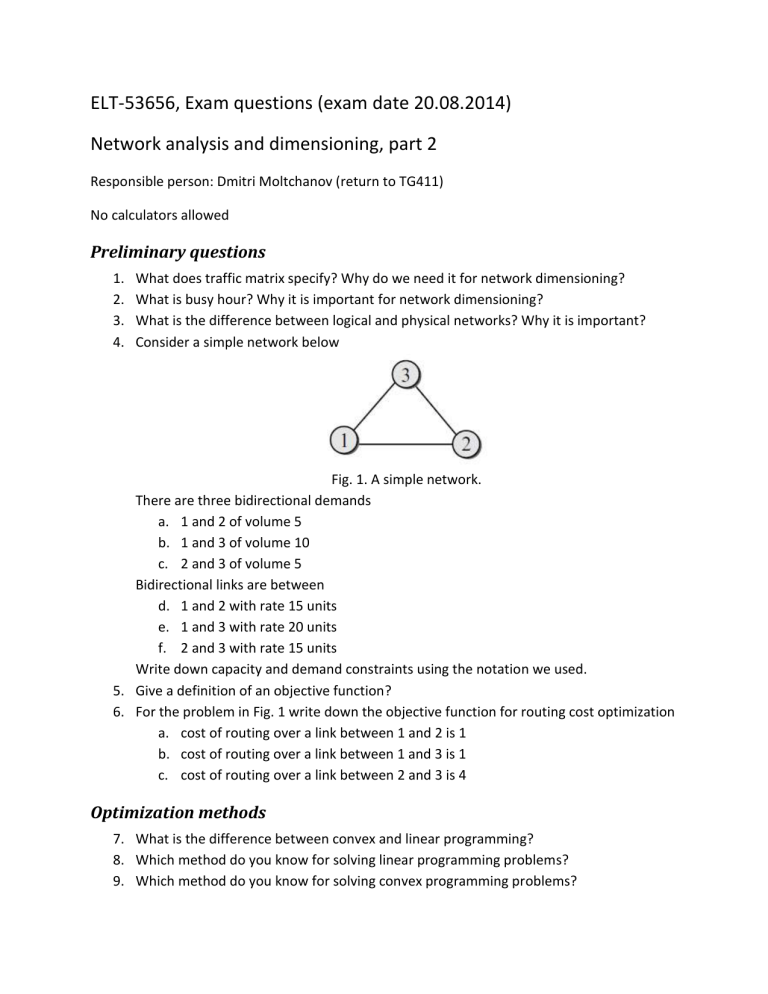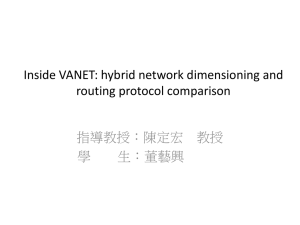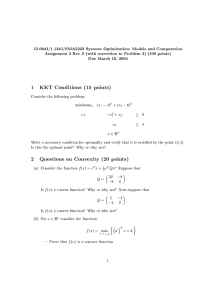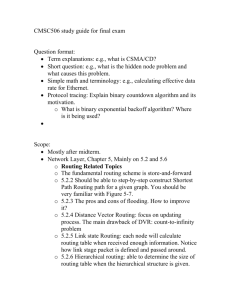docx

ELT-53656, Exam questions (exam date 20.08.2014)
Network analysis and dimensioning, part 2
Responsible person: Dmitri Moltchanov (return to TG411)
No calculators allowed
Preliminary questions
1.
What does traffic matrix specify? Why do we need it for network dimensioning?
2.
What is busy hour? Why it is important for network dimensioning?
3.
What is the difference between logical and physical networks? Why it is important?
4.
Consider a simple network below
Fig. 1. A simple network.
There are three bidirectional demands a.
1 and 2 of volume 5 b.
1 and 3 of volume 10 c.
2 and 3 of volume 5
Bidirectional links are between d.
1 and 2 with rate 15 units e.
1 and 3 with rate 20 units f.
2 and 3 with rate 15 units
Write down capacity and demand constraints using the notation we used.
5.
Give a definition of an objective function?
6.
For the problem in Fig. 1 write down the objective function for routing cost optimization a.
cost of routing over a link between 1 and 2 is 1 b.
cost of routing over a link between 1 and 3 is 1 c.
cost of routing over a link between 2 and 3 is 4
Optimization methods
7.
What is the difference between convex and linear programming?
8.
Which method do you know for solving linear programming problems?
9.
Which method do you know for solving convex programming problems?
10.
Why integer and mixed integer programming problems are complex?
11.
Which exact method do you know for solving (mixed) integer programming problems?
12.
What kind of problem we are dealing with below? (simply classify)
Minimize
F
E
1 / subject to e
1 y e
E e
1 x dp
h d
, d
1, 2, , D and
P d
D d
1 p
1
x edp dp
y e
, e
1, 2, , E
Network dimensioning
13.
What is the difference between capacitated and uncapacitated design problems?
14.
Formalize the capacitated model in Fig. 2 having routing cost minimization as objective
Fig. 2. A network model.
Data you need: a.
demand volumes: h
1
10, h
2
15, h
3
10 b.
link rates: c
1
5, c
2
10, c
3 c.
routing costs:
1
2,
2
4,
3
7, c
4
15, c
5
10
1,
4
2,
5
3 d.
all paths are available for use!
15.
Modify the model above to be of uncapacitated type. What is the principal difference?
16.
Solve the uncapacitated model (you don't need optimization software for it)
17.
What needs to be done to convert the model above to the topology design model?
18.
What is the principal difference between fair network models and classic design model?
19.
Convert the model above to the fair network model using proportional fairness criteria.
20.
Briefly discuss max-min, proportional fairness and maximum network utilization criteria.











